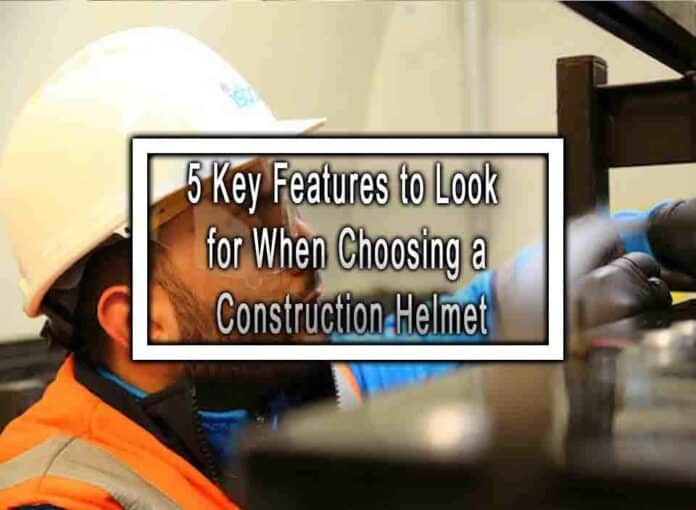Choosing the right construction helmet is essential for ensuring safety on the job site. Construction helmets, also known as hard hats, protect your head from falling objects, impacts, and other potential hazards. Here are five key features to look for when choosing a construction helmet:
1. Compliance with Safety Standards:
- Ensure that the helmet meets relevant safety standards, such as those set by organizations like the Occupational Safety and Health Administration (OSHA) in the U.S. Look for labels or markings that indicate compliance with these standards.
2. Type and Class:
- Construction helmets are classified based on their type and class. Type indicates the level of protection (impact, penetration, and electrical) the helmet offers. Classes represent the helmet’s electrical insulation properties.
- Choose a helmet type and class that align with the specific hazards you’ll encounter on the job site.

3. Suspension System:
- The suspension system is the inner part of the helmet that rests on your head. It provides comfort, stability, and impact absorption.
- Look for a suspension system that is adjustable to achieve a secure fit and comfortable wear. Some helmets offer ratchet-style adjustments for easy customization.
4. Material and Shell Construction:
- Helmets are typically made of materials like high-density polyethylene (HDPE) or polycarbonate. These materials provide impact resistance while remaining lightweight.
- Consider a helmet with a vented design for better airflow and comfort during hot weather.
5. Chin Strap and Retention System:
- A chin strap or retention system helps secure the helmet on your head, preventing it from falling off during sudden movements or accidents.
- Look for a chin strap that is adjustable and easy to fasten. Some helmets also feature quick-release buckles for added convenience.
Bonus Tip: Personalization and Customization:
- Some construction helmets offer customization options, such as adding your name, company logo, or reflective tape for increased visibility. Personalizing your helmet can make it easily recognizable and unique.
Remember that construction helmets have a limited lifespan due to wear and tear. Inspect your helmet regularly for signs of damage, cracks, or wear, and replace it if necessary. Prioritize safety and comfort when choosing a construction helmet, as it plays a crucial role in protecting your head and preventing injuries on the job site.











